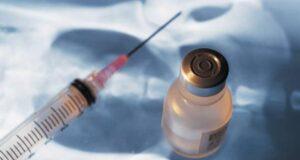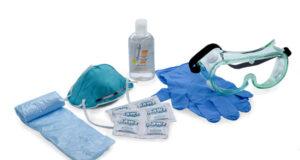|
Listen To The Article
|

Although many preppers have hunting skills and food supplies, medical preps are often one of the areas where people are least prepared.
Even preppers with advanced weaponry skills, off-the-grid energy systems, and ample food and water supplies often have one weakness in common – a lack of medical skills. Members of the homesteading, survival, and prepper community frequently spend an abundance of time reading and going to training workshops to enhance their emergency medical skills to become better able to protect their loved ones during a disaster scenario.
Concerns about a bird flu pandemic have grown since the new H7N9 strain made headlines. The Ricin letters sent to President Barack Obama and several senators also highlighted the chemical weapon threat still present in the United States. Knowing how to garden, shoot a deer, and clean water for drinking are integral aspects of survival, but if we do not know how to detect and treat illnesses and wounds, all the ammo and powdered milk in the world will not keep us alive in a disaster scenario.
Off The Grid News recently sat down with Dr. Tom Stoner to discuss medical preps and get a better idea of the health dangers facing America. The TSSP Incorporated co-founder detailed how to best prepare to stay alive and well should one of the natural or man-made scenarios occur.
OTG: You have been prepping for fifteen years, but before that, you already had a successful medical career and had served in the U.S. Air Force. What prompted you to embark on not only a preparedness lifestyle, but yet another career which involved sharing your massive medical knowledge with others?
Dr. Tom: I started prepping when I joined the military in 1995. They really do a good job of teaching this, and especially in the medical field. The military always taught us to prep with one months’ worth of food and water plus a mo-bag or mobility bag.
OTG: How has your expertise in nuclear, radiological, and bio and chemical warfare impacted the way you prepare with your wife Sheila and educate others?
Dr. Tom: 9/11 really drove me closer to “prepperism,” and most folks with common sense understood that our federal government couldn’t be there all the time. Plus I had an event with my four-year-old son right after I was revaccinated with smallpox, and the lack of help with that event also drove me in a more self-educated and sufficient direction.
OTG: Have you noticed an increased interest in prepping due to the EMP threats by North Korea?
Dr. Tom: An EMP or solar flare is always a concern and projections are that this year could be active as it relates to the sun. The damage that this would wreak on the nation would also be catastrophic and would throw us into the dark ages, but so would an anthrax, smallpox, or flu pandemic. Our current medical community is 15,000 docs short per NBC and Bloomberg reports. And we have lost and will continue to lose a huge knowledge base that has sought early retirement.
OTG: What steps have you taken to prepare for a downed power grid or other long-term disaster scenarios?
Dr. Tom: My wife and I keep sutures kits, Lidocaine, some antibiotics, and IVF for any casualties that may come our way. Certainly food, shelter, and water are all still the basics, but we heat with wood and have a stream close by, and I hunt and am pretty good. We have a local group, and we subsist on one another. What one doesn’t have, the other does. It is a team approach, really the best way; team together and everyone achieves more.
Learn How To Make Your Own Emergency Remedies For Use In Any Survival Situation …
OTG: A significant portion of your training and professional experience is in disease control. You were involved with the anthrax and smallpox vaccine program while in the Air Force. Concerns about a global pandemic or epidemic due to bird flu have been at the top of some preppers’ priority list for several years. The lifting of the ban on airborne bird flu testing has garnered backlash from many bioterrorism experts. The new H7N9 bird flu strain is possibly being transferred from human-to-human. While WHO and CDC scientists are not yet ready to confirm such a transference yet, they have raised concerns about the valid possibility. What are your thoughts about the potential of a bird flu pandemic or epidemic on a world-wide scale?

A well-stocked medical kit is the minimum requirement for preparing for a disease outbreak.
Dr. Tom: Certainly bird flu is a concern with H7N9, but so is SARS. It is more of not “if” but “when.” Most of the recent literature cites that this current flu is being spread human-to-human but seems to be more clustered amongst families. When this really does go down, human-to-human transmission will occur rapidly as will viral mutation from person to person and this will devastate our nation and the world. We may not be able to create a vaccine quickly and hundreds of millions could die, if not more. Antivirals also lose their potency anyway and would not have much affect here either. The key is to contain, quarantine, and vaccinate. Also PPE (personal protective equipment) is a must with an N-95, eye cover, and hand hygiene. A surgical mask with face shield is our current standard, but I push for the N-95 mask.
Smallpox is still a concern although less due to its availability, but it is highly contagious; lethality could be 50 percent. Greater concerns at this point are anthrax due to its availability in our soil and ease of production and fermentation—over twenty countries have stockpiles. Anthrax spores live for weeks to years and are not easily destroyed. Inhalation is near 100 percent lethal, and there is no cure. Once it is inhaled and by the time it is figured out, it is too late.
200 pounds of anthrax could easily kill millions, with three to four million in casualties and also devastate and kill wildlife and farm animals. This would be released several miles up wind from a small plane and is known as the poor man’s nuke—easily and cheaply accomplished with tragic results. This one scares the hell out of me.
OTG: What services and gear does TSSP Incorporated offer?
Dr. Tom: Our medical kit offers antibiotics like Amoxicillin, Bactrim, Ciprofloxacin, and Flagyl; anti-fungals like Diflucan; anti-nausea meds like Phenergan; and Prednisone and Benadryl for allergic reaction. We also have Tylenol and Motrin in the kit with instructions. Other options with the kit are the N-95 masks, a suture kit, and suture—and really anything else that you could think of. I deal directly with the largest wholesale medical distributor in the world. I do not sell or distribute narcotics or sedatives—no scheduled medications at all.
OTG: You are one of the featured speakers at the Doomsday Expo in Denver. What topics will you be covering during the mega preparedness convention?
Dr. Tom: Topics for the expo are on anthrax, smallpox, flu, dirty bombs, and all audience questions. Most of us are aware that we can take one hit like a Sandy, but couple that with a flu epidemic or dirty bomb or two or three events at one time, we can’t handle it.
 Off The Grid News Better Ideas For Off The Grid Living
Off The Grid News Better Ideas For Off The Grid Living




